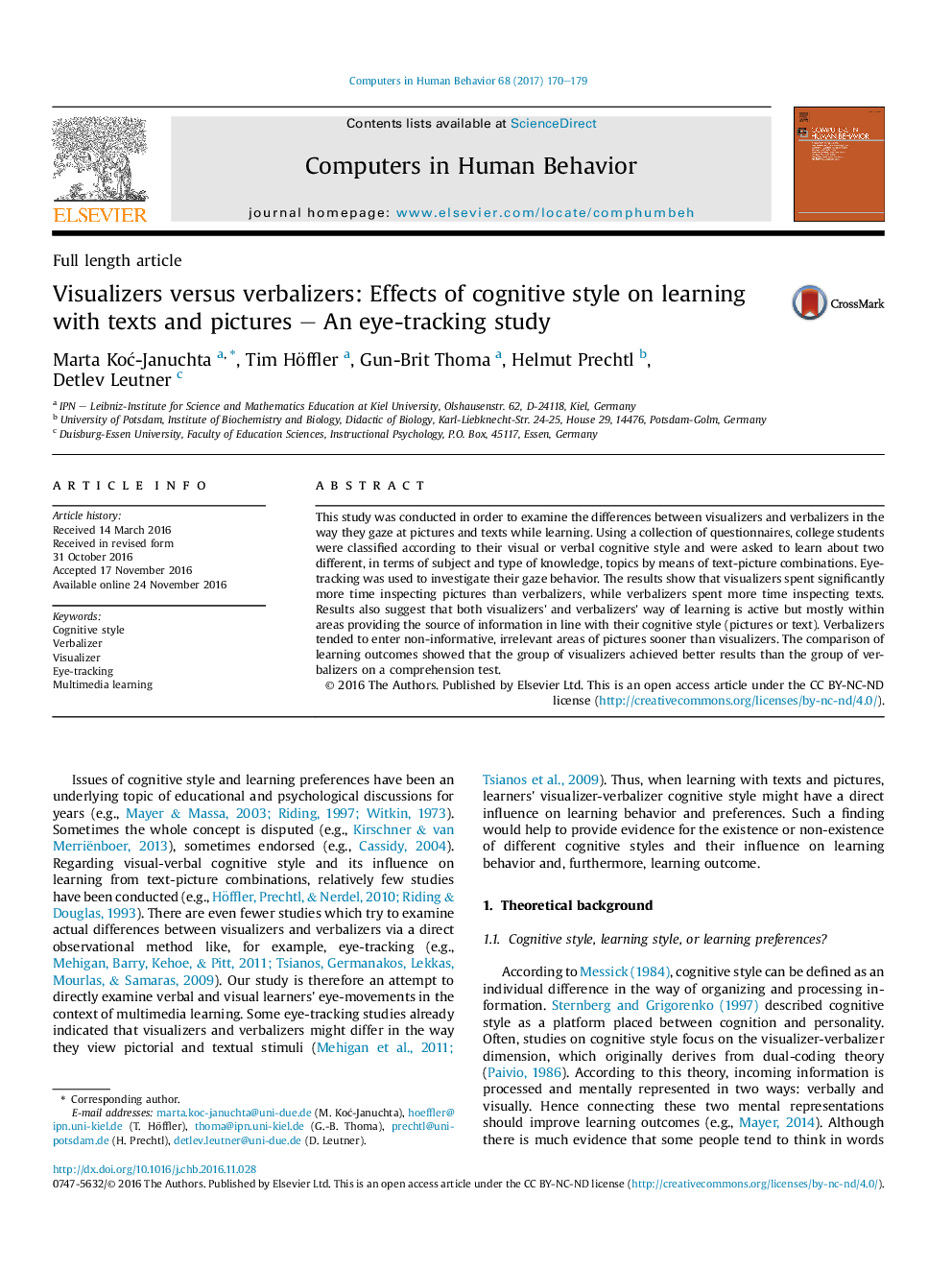| Article ID | Journal | Published Year | Pages | File Type |
|---|---|---|---|---|
| 4937673 | Computers in Human Behavior | 2017 | 10 Pages |
â¢Visualizers and verbalizers differed in terms of gaze behavior while learning.â¢Visualizers learned mainly from pictures, verbalizers from texts.â¢Verbalizers built more connections within texts, visualizers within pictures.â¢Verbalizers entered irrelevant areas of pictures sooner than visualizers.â¢Visualizers outperformed verbalizers on comprehension.
This study was conducted in order to examine the differences between visualizers and verbalizers in the way they gaze at pictures and texts while learning. Using a collection of questionnaires, college students were classified according to their visual or verbal cognitive style and were asked to learn about two different, in terms of subject and type of knowledge, topics by means of text-picture combinations. Eye-tracking was used to investigate their gaze behavior. The results show that visualizers spent significantly more time inspecting pictures than verbalizers, while verbalizers spent more time inspecting texts. Results also suggest that both visualizers' and verbalizers' way of learning is active but mostly within areas providing the source of information in line with their cognitive style (pictures or text). Verbalizers tended to enter non-informative, irrelevant areas of pictures sooner than visualizers. The comparison of learning outcomes showed that the group of visualizers achieved better results than the group of verbalizers on a comprehension test.
